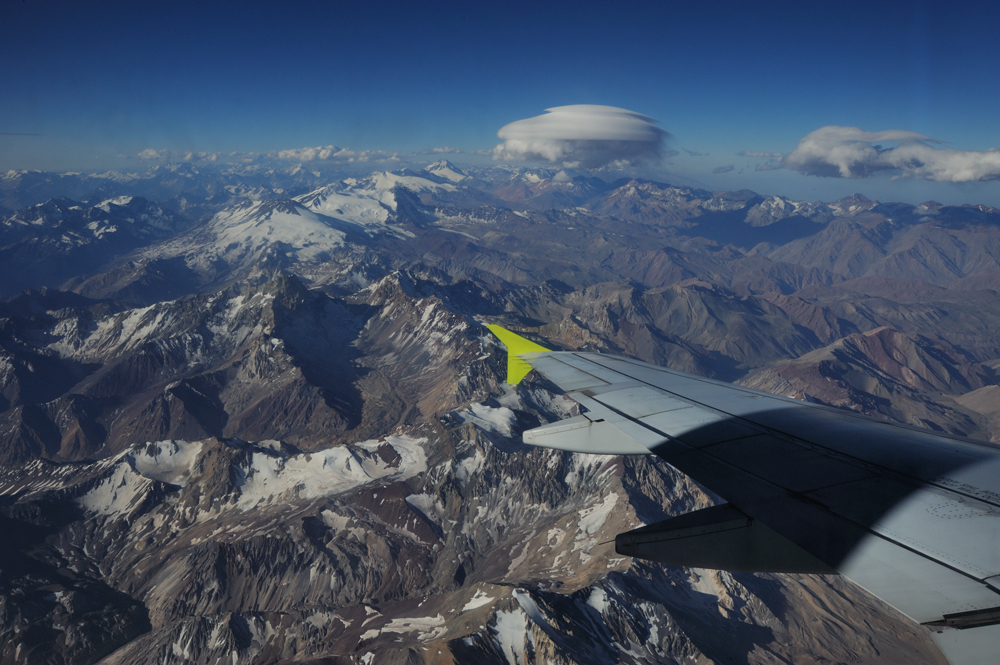
Whole South America from north to south is divided into two unequal parts by the Andes mountain system. Somewhere in the middle, Andes reaches its vertical maximum with the highest mountain of Western and Southern hemispheres, Aconcagua.
From the national point of view, Aconcagua locates in Argentina, Mendoza province (Malbec!, – immediately said sommelier in my head), 15 km from Chile border.
We planned to climb Aconcagua for several years already, but every time different things appeared on the way of our travel. Finally, everything was solved, and we started our preparations.
For the beginning, a route should be chosen. There are three routes to the summit. One, the Polish Glacier route, is technical with hard climbing on the glacier ice walls. Very few choose this route. It was not our piece of cake. Two other routes are good for men of mould. They start in different river valleys, pass mountain from different sides, and merge together in Colera camp on 6000 meters. From Colera camp (Colera means pass, the camp actually locates on the pass) there is one common way to the summit.
On this scheme, you can see the routes from base camps. There are two of them – Plaza de Mulas and Plaza Argentina, both located on 4200 meters approximately.
An elevation gain from both camp to the summit is about the same, but the route from Plaza de Mulas is shorter and steeper. From Plaza Argentina, you need about circuit the mountain to reach the summit.
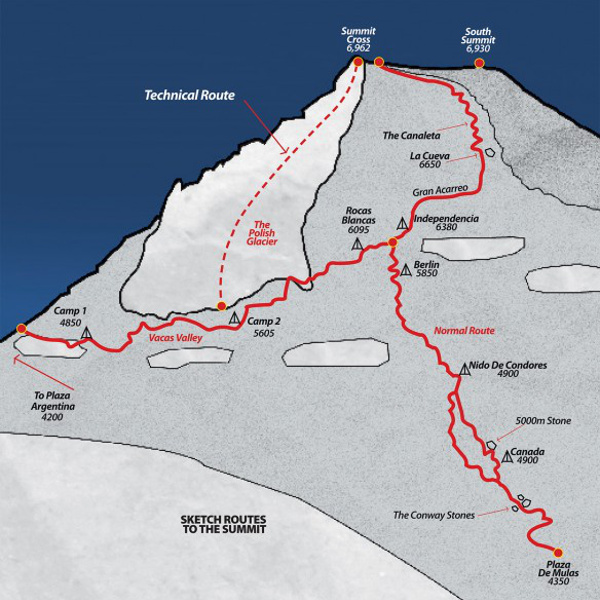
This is the scheme of Aconcagua park with the routes to the base camps. To them, you also should hike.
The route to Plaza de Mulas starts in Puento del Inca and takes two days. The route to Plaza Argentina is longer and takes three days from Puente de Vacas.
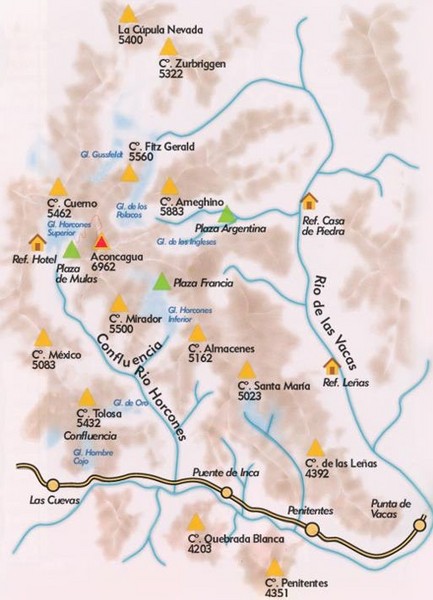
Most people prefer way via Plaza de Mulas because it is shorter. As a result, it is called Normal or Standard Route. The route through Plaza Argentina is called Polish Glacier Traverse Route. Study of the routes description shown that the route through Plaza Argentina is longer, less crowded, less dust, has some live nature (plants and animals), and view of the mountain itself. In total it sounded more interesting. So we decided to use Polish Glacier Traverse Route for an ascent and Normal route for a descent to break the monotony. That meant that we lose the possibility to leave some weight in the base or any other camps if we need with the aim to pick it up no the way back. So we must carry all our staff all the way, but everything has its own price.
So the route was chosen.
Here I would like to give some explanation about peculiarities of high mountain climbing for my readers who are not familiar with the subject and might be wondering why we spent so much time on the mountain and why our way was so indirect. People familiar with altitude influence on the climbing can skip this part.
A common problem of all big mountains is a lack of oxygen. Human physiology is adapted to the sea level where the partial pressure of oxygen is 21.2 kPa. The function of all our systems is the best at this pressure. The partial pressure of oxygen is decreasing when the altitude is increasing. On the summit of Aconcagua, you will have only about 40% of oxygen compared with sea level. An organism doesn’t have enough oxygen for all its needs and as a result, you have problems, specifically altitude sickness. I would skip the details (wiki has a good article about the subject), but developed altitude sickness is brain and lung oedema primarily, and your life can be saved only by immediate descent (better directly to the hospital). To avoid such extremity an organism must be adapted to the altitude. Our organisms are very adaptable, but they need time and some help.
The altitude on which altitude sickness can start to appear depends on a climate. In a wet climate, it starts lower (on Kamchatka at 1500 meter), in dry climate higher (in Central Andes at 4000 meters). It also depends on the individuality of an organism, and reaction cannot be predicted ahead. Adaptation (that includes, for example, increasing of erythrocytes production) requires days. As a result, ascend must be very slow. Experience of many climbers shows that the best approach is “two-step forward, one step back”, when you ascent on altitude x+n, after descent to altitude x and spend a night here. The same on the next day. Specific schemes are different and everyone chooses more workable for himself and a specific mountain. About our movement, I will tell later. Besides this, the physical work is very important. If you come to high altitude and just lay down, nothing good happens. You should physically work. In our case carry a heavy backpack up to the mountain:) (Note, this is not an instruction for acclimatization, it is just explanation of climber behaviour. Acclimatization requires also some other important things.)
And the last part of the acclimatization story. It is not just a process, it is an energy-consuming work. Different altitude takes away a different amount of energy from different people but always does. Sometimes (especially in high mountains) it takes so much that not enough left for a summit day. In this case, people turn back. If they not smart enough to turn back, they stay on a mountain forever. It also happens from time to time. Sometimes curious incidents happen. One Canadian Everest expedition decided to make ideal acclimatization. They spent a month in base camp climbing surrounding peaks. After this, they just didn’t have the energy to even try to climb Everest. Altitude (especially above 5000 meters) always takes your energy away. As longer you stay as more it takes. Don’t also forget cold, wind, hard work and many other factors that are always present.
Enough about altitude. Aconcagua has several personal features. First, it locates near 30 parallel. Tropics. Sun is really hot. Combination of high altitude and the tropical sun gives huge daily temperature ratio. During the day it can be hot in T-short, at night springs become frozen. Even during the day temperature scan be significant. Clouds cover the sun, and snow start to fall. Clouds disappear, and the sun immediately melts all fresh snow. By the way, the sun is really hot, so don’t use T-short only, cover all your skin. And the wind. Aconcagua is the dominant mountain of the region, so it is always windy, pretty often very windy. Also, it is very dry. If you are not a Bedouin, it is not comfortable.
On the other side, the mountain is beautiful:)
Enough of introduction, time to move to active actions.
December 15
Everything is packed, and we are on our way to Vancouver to meet with our friend and left our car with them for the next month.
December 16
We had a flight to Santiago (the capital of the Chili) with the transfer in Toronto. It was a very long flight, I had time for many movies from plane collection.
In Toronto I first time saw a cleaning of plane form ice.
This car came, checked everything
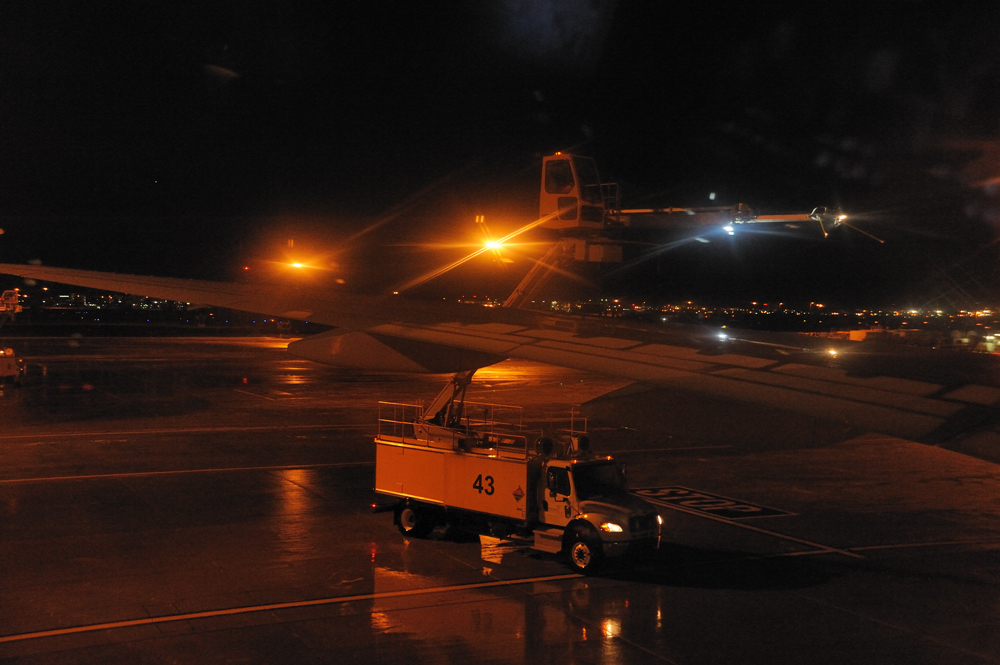
and started to wash,
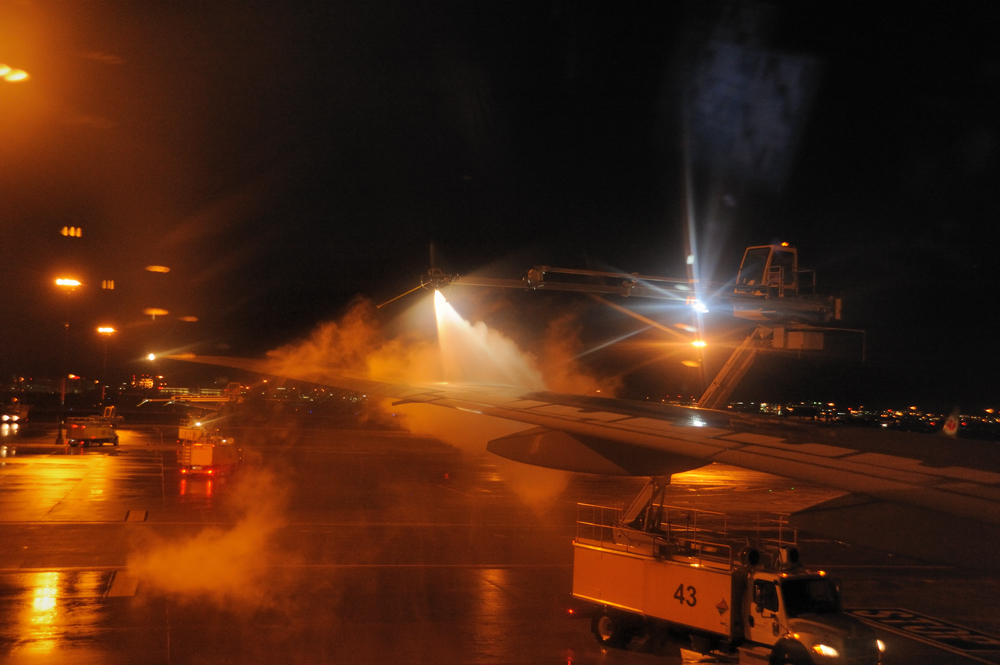
when the second one came, and they finished together.
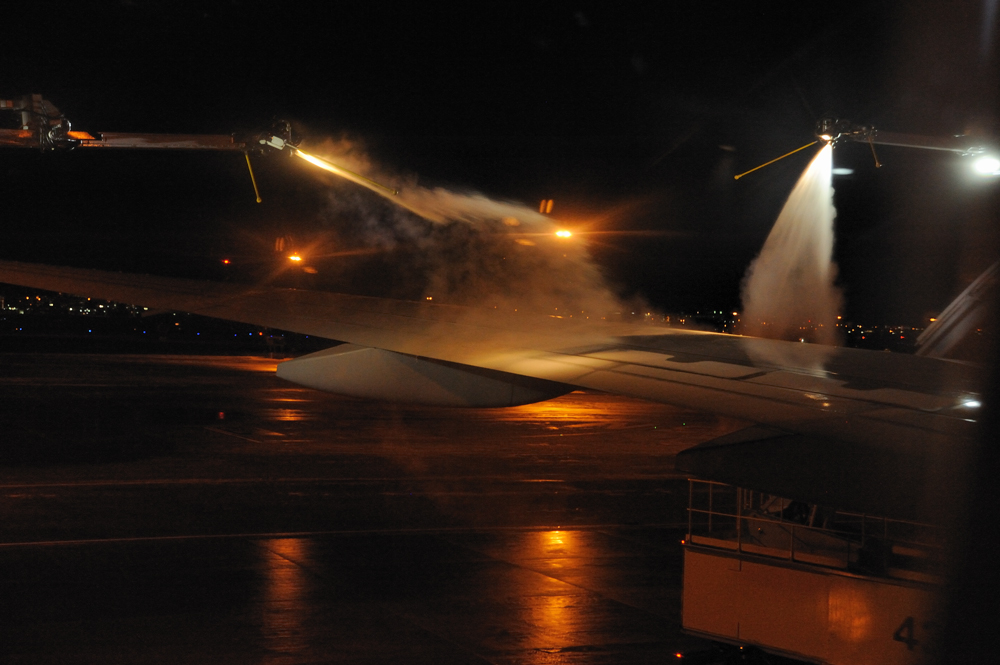
December 17
We were a little nervous about Chilean custom. All traveller’s forums that I read demonize it, advise completely avoid any trace of meat and dairy and be prepared that all your food will be confiscated. We didn’t take any jerky, smoked sausages and cheese, that we usually use as a snack, and worried about dry-freeze food. Finally, nobody paid any attention to us and our luggage.
We arrived in Santiago at about 2 pm. Our next flight to Mendoza was in three hours. We didn’t have enough time to visit the city, nothing interesting was around the airport, so we decided to spend time in a restaurant. Airport restaurant offered steaks and cold beer, that is ideal for the tired organism. After the order, the waiter told us that they don’t serve alcohol until 8 pm. Not only in this restaurant but everywhere. 8 pm! Because we didn’t have a common language with the waiter, we didn’t find the reason for this.
The internet search shows that Chile has a law that prohibits to sell alcohol until some hours. Exact hours depend on a day and a place. Well, but until 8 pm on Sunday!
However, on our way back we came to Santiago airport on Sunday again. This time I got my beer at about 5 pm. So I am not sure that it was in the first place. But still, it is very strange.
Steak also was not perfect, so we flew to Argentina.
Above Andes:
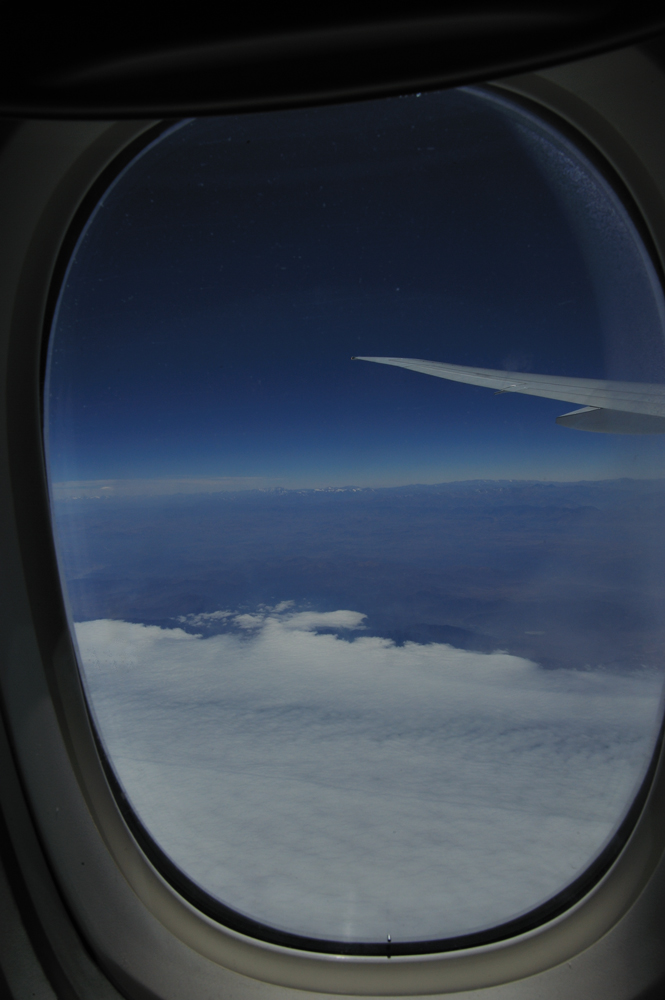
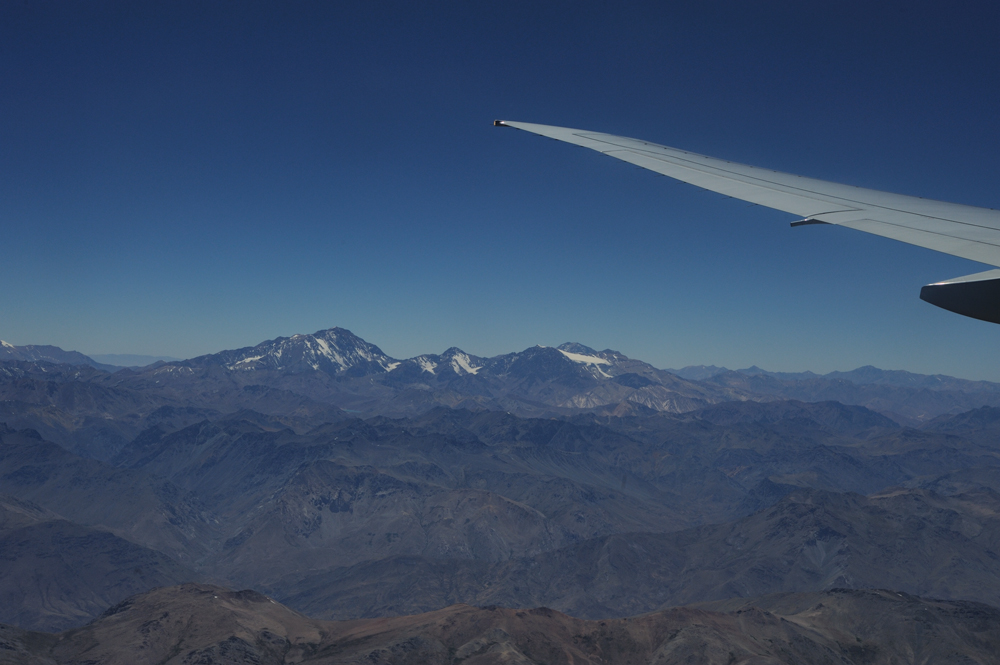
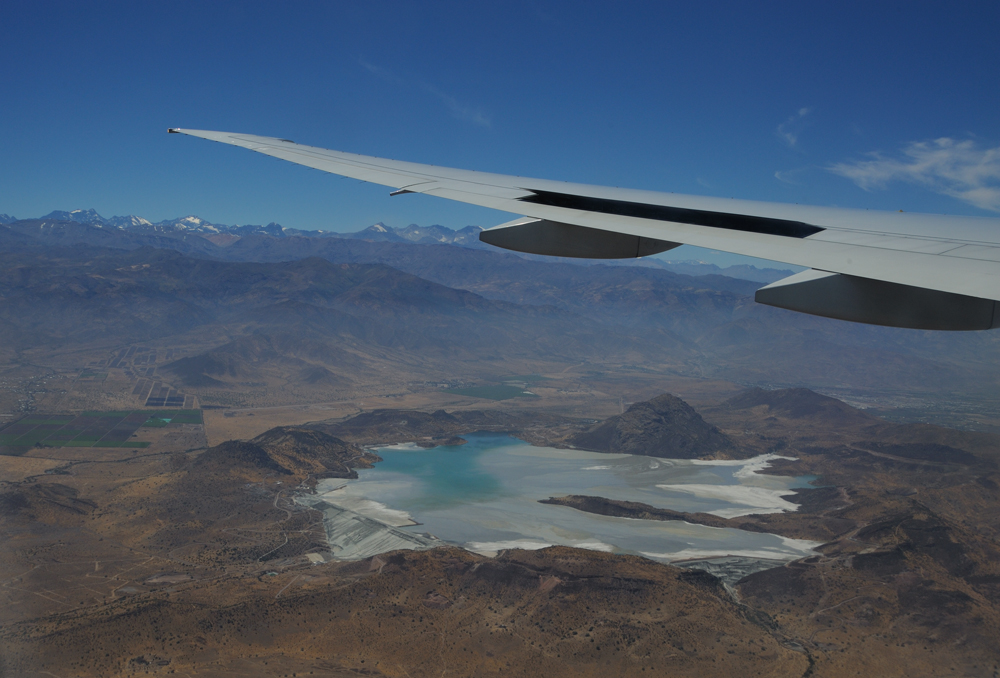
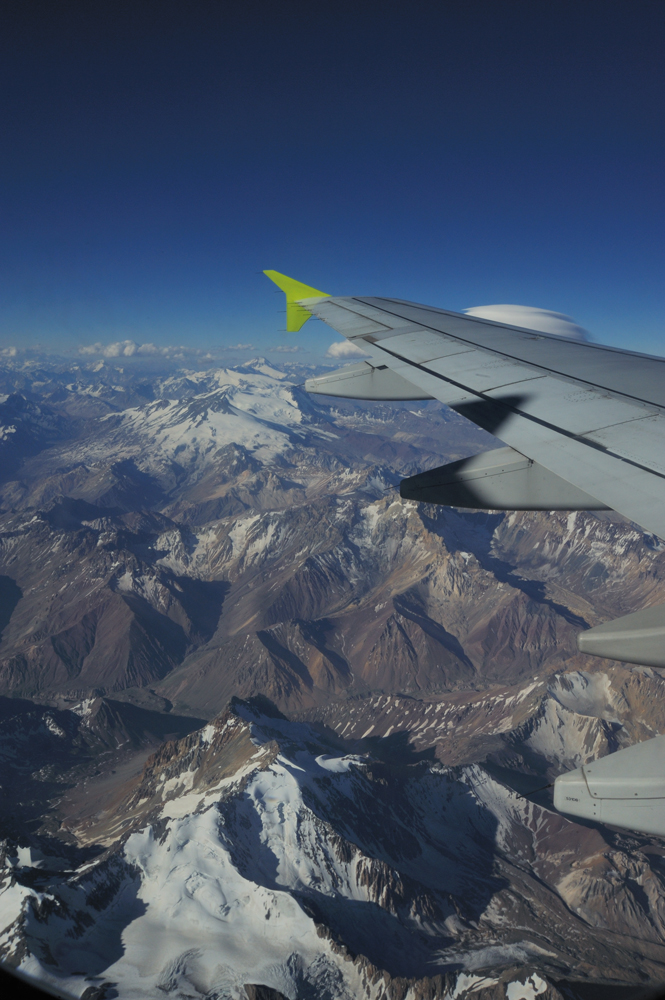
In Mendoza, we came in time. Next day the Argentinian government passed some unpopular law, and all transport worker staged a strike. We passed in the last moment.
Argentinian custom that also doesn’t like pass the food, just asked – Aconcagua?, and forgot about us.
Actually whole travel to Mendoza was perfect: planes were in time, luggage was not lost, customs didn’t pay any attention to us.
Mendoza airport is surrounded by vineyards. Malbec country greets you right on the plane ramp.
Our hotel was really nice and unbelievably cheap. We spent a nice night in the neighbours’ restaurant with perfect steaks and good Malbec.
December 18
The first half of the day we spent moving around the city and solving last logistic tasks. The main task was to get our climbing permits.
Mendoza is a nice town with many parks, bike trails and playgrounds. The walking was pleasant, but I will never rent a car here, their road behaviour is too much for me. However, the taxies are numerous and not expensive, so it is not a problem.
Aconcagua Park ranger station. Here we spent a long time in the line of climbers.
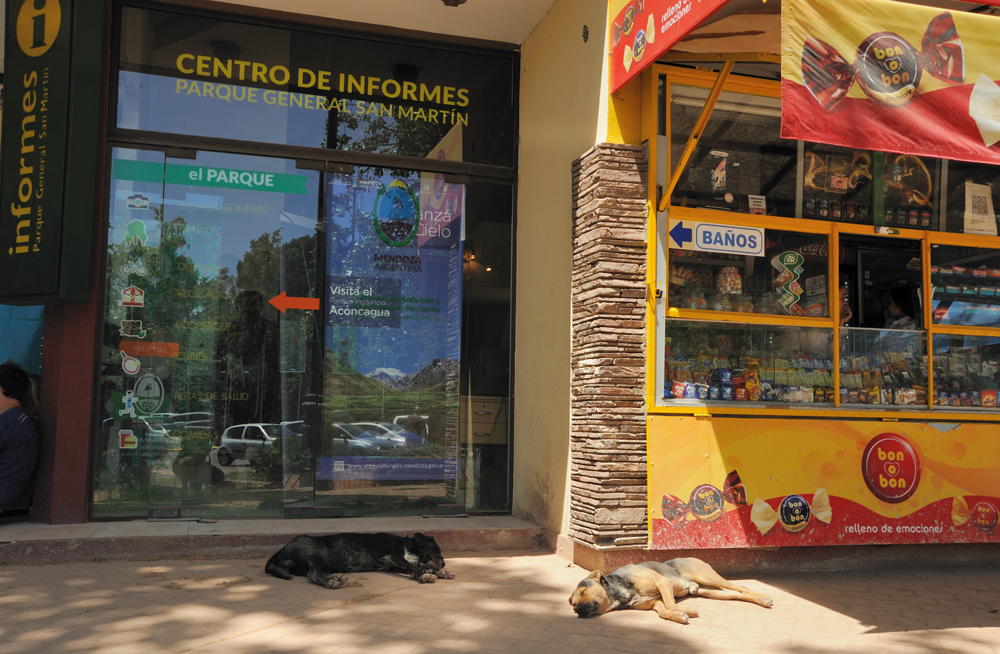
Finally, we exchanged pot of our money to permits (climbing permits are expensive, about 1000 backs per person at this time of season).
After was a quick shopping. I need something meaty as a snack, I cannot survive on granola bars and sweets. It was a challenge to find grocery (not many people on the streets speak English), but finally, we got a batch of delicious smoked sausages, they were real help on the mountain.
In the afternoon we were on our way to mountains, to be precise, to Penitentes. It is a small place, a ski resort in the winter, and last civilized place for Aconcagua climber in the summer. There are some hotels, restaurants and other useful facilities.
Mendoza locates at 700 meters above sea levels, Penitentes is already at about 2500. The road starts among vineyards but soon goes to dry hill and mountains.
Looking on this dryness difficult to believe, that it can have enough snow for skiing.
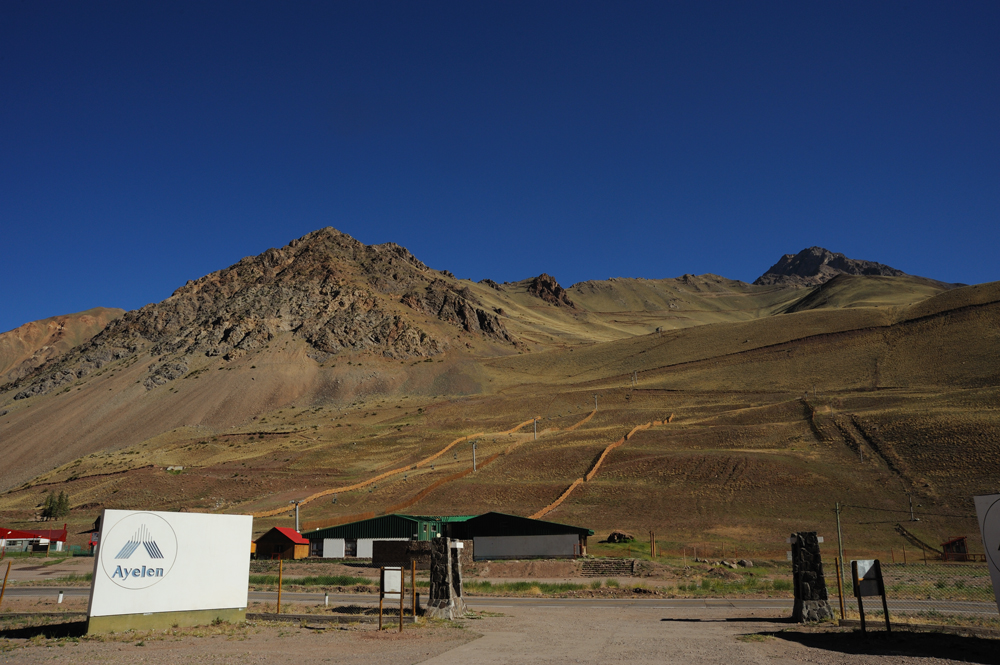
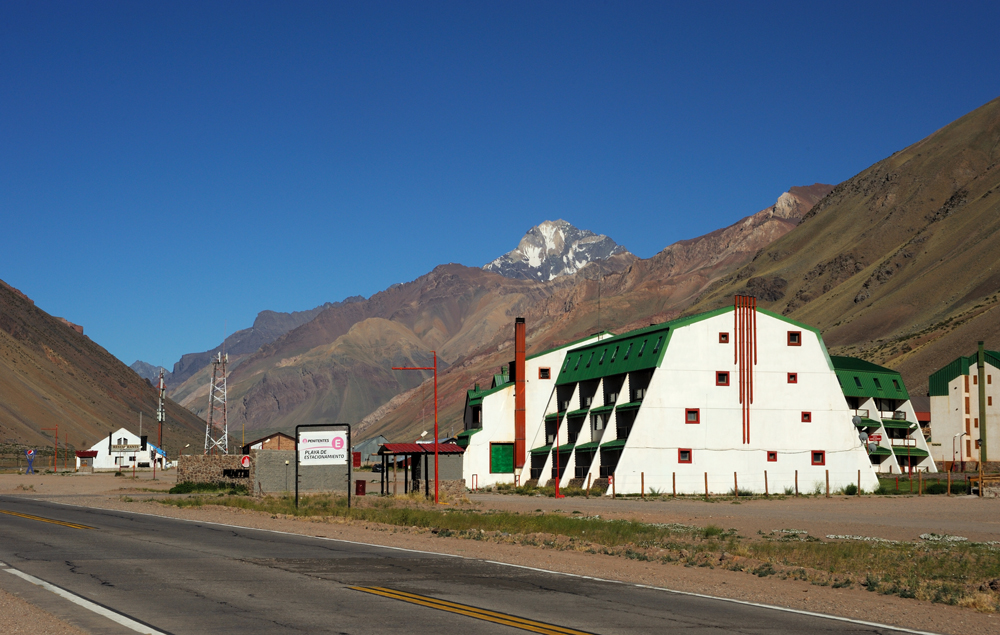
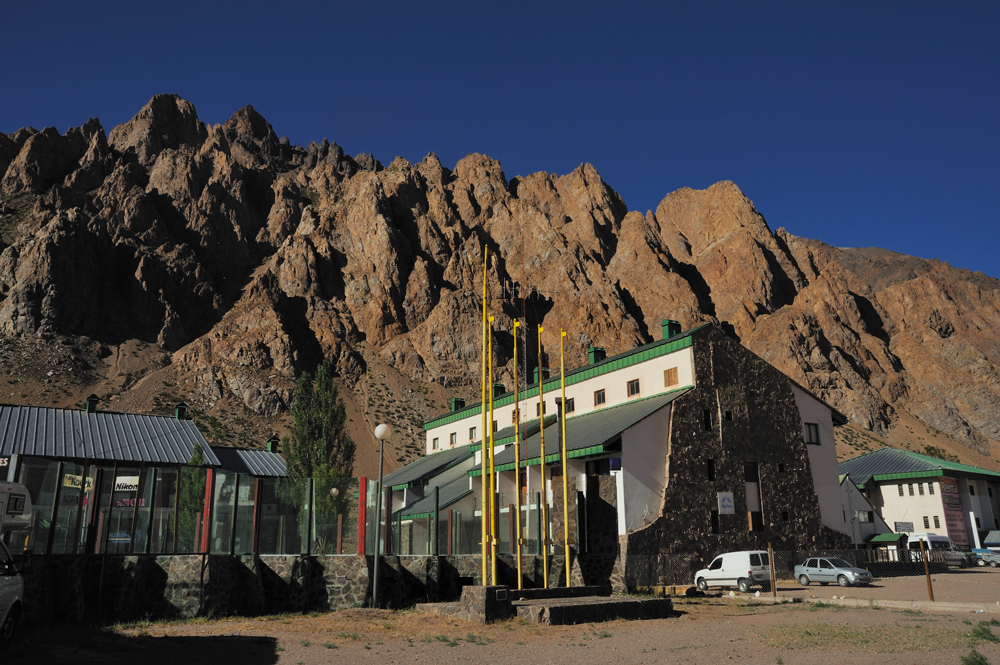
The only flower that was found.
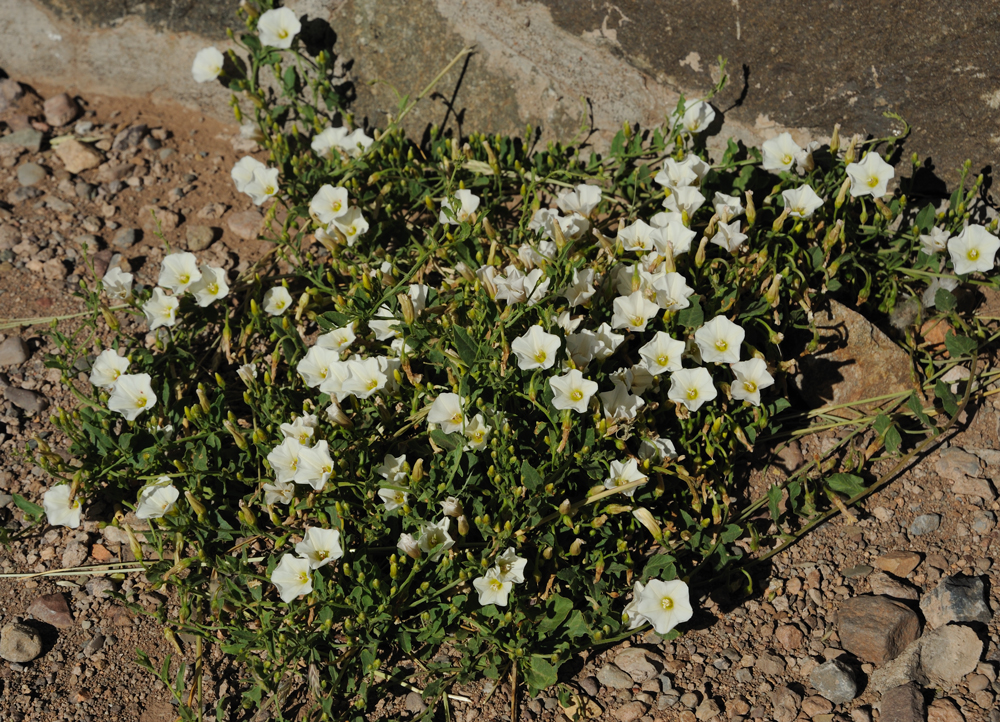
Last night in civilization – dinner in the restaurant and night in the clean bed.